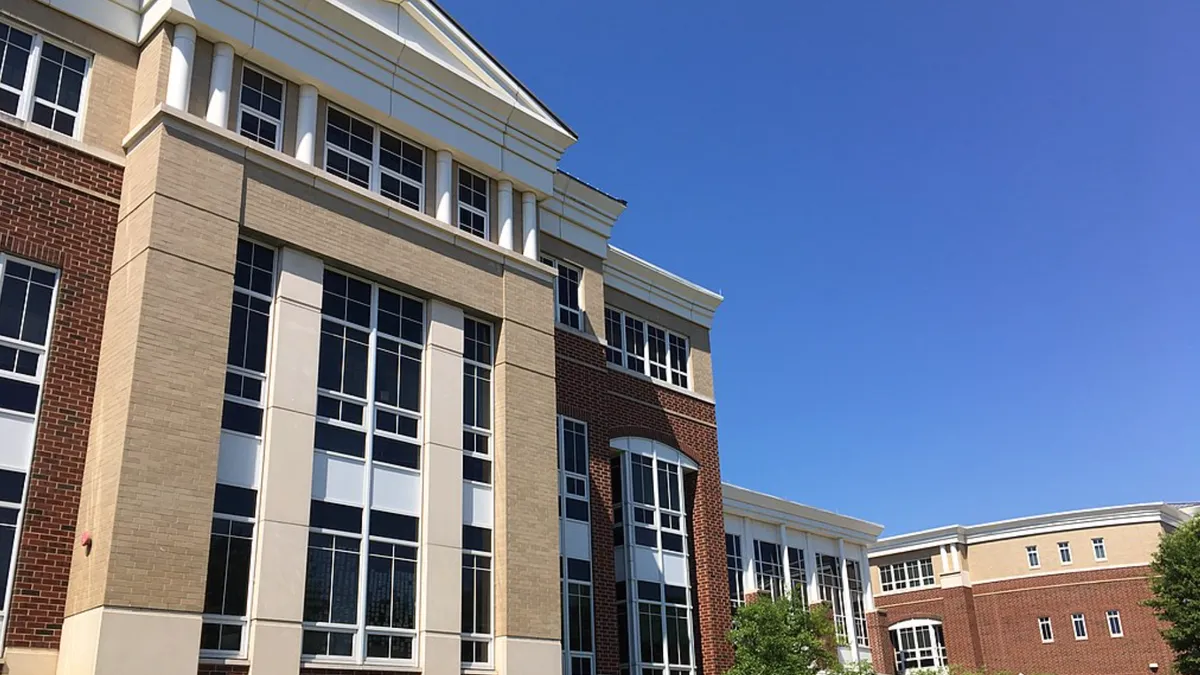Those who have seen Disney’s “Remember the Titans” know the story of T.C. Williams High School from the opening scene — or at least the Hollywood version of how the city of Alexandria, Virginia, consolidated and integrated all 11th- and 12th-grade high school students in one place in 1971, during an era of racial violence and unrest.
All graduates from the district have been Titans ever since.
That came close to changing this fall, when school board members were once again faced with the decision of whether to split the state’s largest high school or keep the one-school model in place.
This time, their vote to move forward with one school wasn’t because of pressure from the state to desegregate, nor were there violent protests. But race was still on the minds of decision-makers.
'We are not past race'
“We’ve had conversations around our history, and I’ve heard some people say that, you know, the history was then, it doesn’t matter as much now [and] we should be past that,” Alexandria City Public Schools (ACPS) Superintendent Gregory Hutchings, a T.C. Williams alumnus, said at a September school board meeting before members were set to make their choice.
“But I think of us as a country,” he continued. “We are not past race. We are not at a state in this country where everything is equitable and sometimes even equal. … We have to make sure that we’re using our history to help us inform the decision that we make tonight.”
Proponents of sticking with one high school, including Hutchings, say keeping all students under the umbrella of T.C. Williams — though 9th graders currently meet on a different campus — is the best way to ensure all students have access to the same range of opportunities.
These include the Governor's Health Sciences Academy — a partnership between T.C. Williams and the George Washington University School of Medicine and Health Sciences —from which students graduate with college credits, guaranteed admission to the university, and a certificate they can take into the workforce.
The high school also offers similar programs in finance, science, technology, engineering and math for students who want hands-on career training early in their high school years.
The Health Sciences Academy began last year and starts with a summer bridge program after 8th grade. It allows students to focus on one of seven specific careers within healthcare by their junior year as they earn college credits through dual enrollment. Students continue to take courses with their peers outside of the program.
The logistics and future programming of the "connected high school network," as it’s being called, are still in the planning stages, but district officials said the future of T.C. Williams will likely include other programs like these.
Hutchings said this option will ensure a high-quality education “regardless of your circumstance, regardless of your ZIP code, regardless of the parents you have or don’t have.”
Late last month, the school board and the Alexandria City Council met to discuss details, such as expanding its satellite campus, located about a mile away.
'Very rich diversity' of students
The student body at the T.C. Williams is 41% Latino, 28% black and 24% white, with Asian, multi-racial and native students rounding out the other 7%, according to ACPS.
Reamer Bushardt, senior associate dean for health sciences at GWU, pointed out that the high school is "fully integrated" with a "very, very rich diversity of that student population” in terms of race, ethnicity and socioeconomic status.
Being able to recruit from the entire rising high school student population allows for a more diverse academy, which will, in turn, lead to a more diverse healthcare industry in the surrounding area, Bushardt said.
The two-school option would have split future high-schoolers into one school of 2,900 students and another with 1,600 to accommodate a growing population. (Even though, at 4,102 students, the school is actually smaller now than it was when football players Gerry Bertier and Julius Campbell were walking its halls.)
Michelle Rief, one of three school board members who voted for the two-high school option, said she believes students thrive in smaller school environments.
“Strengthening academic support and counseling" and addressing existing inequities she said, would "ensure student success."
One of the ways the school district is doing that is by creating "industry advisory boards." "We’re inviting members of the business, nonprofit and government sectors to serve on these boards to advise us [on] what needs they’re seeing and help us think through how we can create exposure for kids to those areas,” Rief said.
But Hutchings, whose colleagues warned him of a multiple high school model, said these opportunities could have fallen through the cracks with two different schools and that the district could provide opportunities in a "more robust way" with just one high school.
“No matter what,” he said, “when you have more than one high school, whether it is a reality or a perception, someone is going to say, ‘They’re getting more than I’m getting. They’re better than I am. They have more options than I have.’”
At T.C. Williams, students can sign up for anything they want. And for now, it’s going to stay that way.
“Do we still have work to do? Absolutely,” Hutchings said. “But we are marching in the right direction, so why not continue through this journey, so we can cross the finish line and not only be known for ‘Remember the Titans,’ but be known for serving every single student that comes into our high school of the city of Alexandria.”








 Dive Awards
Dive Awards















